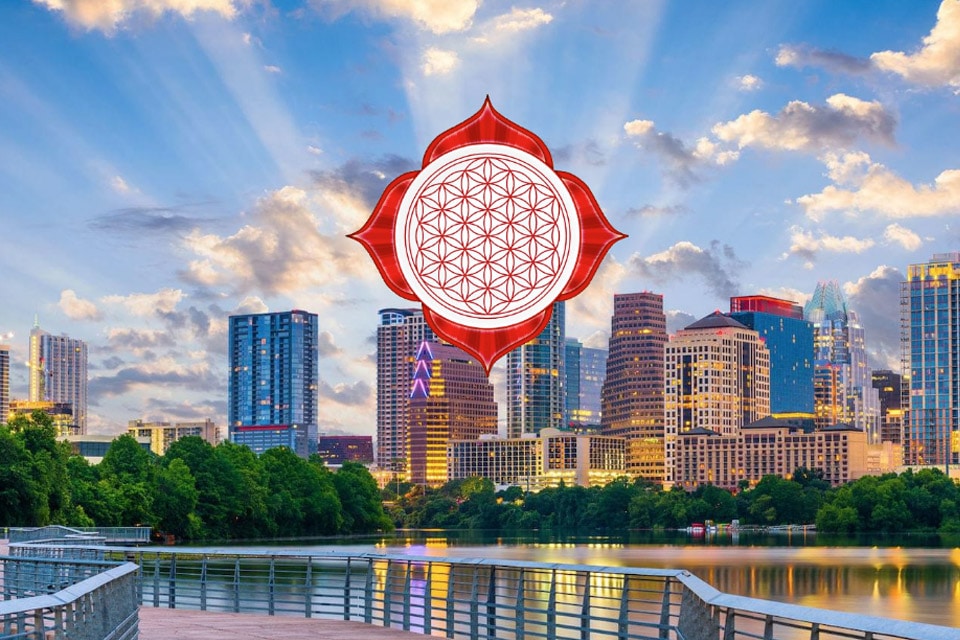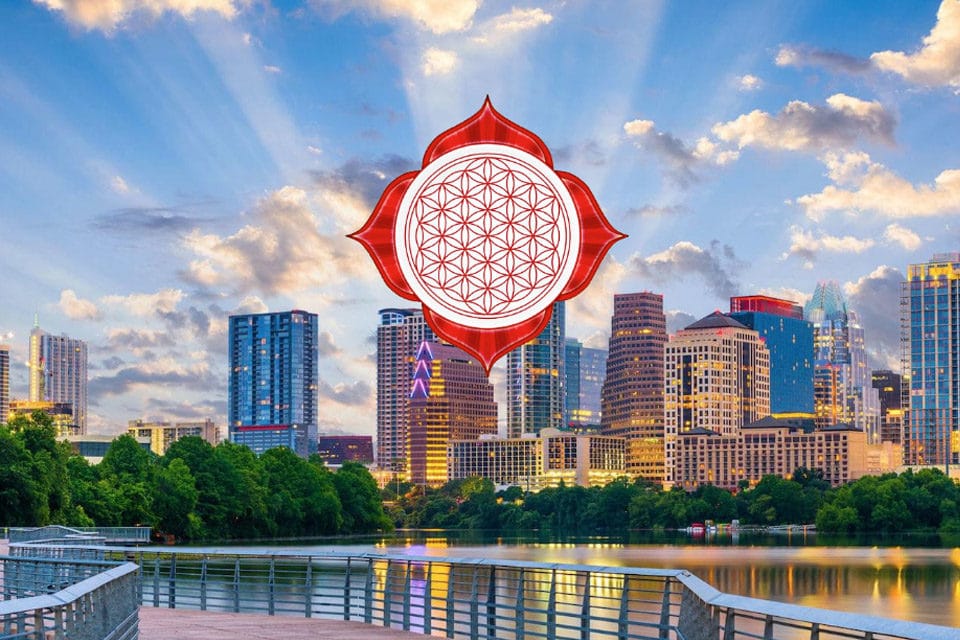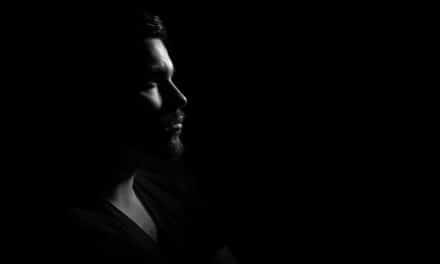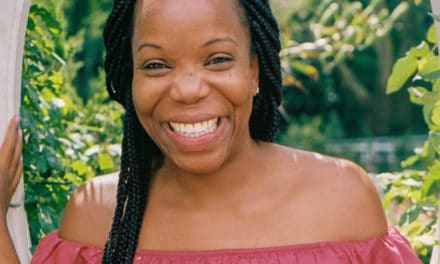
Iboga and its derivative ibogaine have gained notoriety not only as one of the most powerful visionary substances on the planet, but also as a highly effective treatment for people dealing with addiction to opiates and other drugs. As miraculous as ibogaine is, however, it is not a miracle cure, and people who want to get the most out of their ibogaine treatment are highly encouraged to do deep integration work and have a holistic recovery plan that lasts beyond the psychedelic experience itself. To fill in this post-ibogaine-treatment gap, aftercare centers are emerging that specialize in caring for people who are coming out of a powerful ibogaine experience and in the recovery process.
The first of these ibogaine aftercare centers to open in Austin, Texas is Root Recovery, run by Lindsey Slater and Ray Rodriguez. Lindsey is a licensed psychotherapist, graduate of the CIIS psychedelic therapy and research program, and a certified ketamine psychotherapist with training in EMDR, neurofeedback, kundalini yoga, and many other cutting edge modalities. Ray is an integration and recovery coach who successfully beat his own 20 year opiate addiction with the help of plant medicine, and an expert in both 12-step and SMART Recovery models. Together they have helped many people integrate their ibogaine experiences as part of a larger, holistic recovery process from their facility near Zilker Park in downtown Austin. I spoke with Lindsey and Ray about how Root Recovery came to be, and how they approach the delicate work of shepherding individuals struggling with addiction fresh from ibogaine treatment back into their daily lives with positive new habits, community connections, and a strong commitment to overcoming their addictive patterns.
Thanks so much for speaking with me today, Lindsey and Ray. Your facility is beautiful and in a great location here in Austin. Can you share a little bit about the genesis of Root Recovery?
Lindsey: After my first ibogaine experience in 2011, I saw the need in the ibogaine community for aftercare, and started to take referrals for integration work over the phone and Skype. Over time, I realized that many people needed to come and do healing work, not just talk on the phone once or twice a week and then be left to their own devices. When I moved to Austin full time in 2012, I realized we had all these things that, when put together, would make an incredible aftercare program. Those things include ecstatic dance, Lakota sweat lodge, acupuncture, Smart Recovery, the greenbelt, ketamine therapy, kambo, and so on. This idea soon evolved into an on-site healing and integration center. We don’t refer to it as rehab per se—there are many elements of recovery that we have brought in, but it’s definitely a more holistic aftercare facility. Then I met Ray through an ibogaine center called Medicine Heart Recovery, and it was a match made in heaven.
Ray, can you share a bit about your background?
Ray: I started doing drugs at an early age and got involved pretty heavily with heroin. I worked 12-steps for a long time and was right at about three years clean when I went down to visit my friend in Baja, who was doing work with ibogaine. I was blown away seeing how fast people were healing with this medicine, but I still had this 12-step mentality of “this is still a drug” and I wasn’t sure about it. But after my first 5-MeO experience, that shifted and I started getting involved in this work.
Speaking with my friend, he was telling me about the need for aftercare. We were bouncing ideas left and right, and then about a month later he reached out and told me that someone just opened an ibogaine aftercare program in Austin a few minutes away from my house, and that she was looking for help. That’s how I got involved.
Lindsey: Together, we offer a unique harm reduction model that enables people to heal and grow and be honest and real about their experiences. Rather than being rigid, we try to cultivate a space for people to create their own path, and provide acceptance and support.
Ray: I think what’s really important is that we help people choose their own journey. Some people like 12-steps, some like Smart Recovery, other like Refuge Recovery or just a personal meditation practice. We help them cultivate whatever path they choose, because everybody’s journey will be different.
Lindsey: Different models appeal to different people, and for some people none of the models will appeal to them, and we leave space for that too. Right now we have a guest who doesn’t want to do any kind of meetings, yet he’s really tapped into the ibogaine community. So really it’s about community connection, rather than a particular model. However we can foster that community, through a recovery model or through the plant medicine community. Community is really where it’s at. The opposite of addiction is connection, and we help them find that connection, in whatever way works for them.
Ray: Community helps to foster a sense of purpose and belonging. After an addiction, many people wonder, “What is my purpose? What am I doing here?” So we help people look at that, and teach them different modalities of self-care.
Lindsay: Our approach is to address the different layers of self. Therapy addresses the emotional layer, Smart Recovery addresses the cognitive layer, and we take people to the gym or on the trails for the physical stuff. We also incorporate practices called authentic relating and circling that help people to integrate all those different layers and connect to their sensory experience. The practices that we’ve chosen hit all the layers, and that’s the philosophy behind it—hitting every layer of experience.
Beautiful. As powerful a medicine as ibogaine is, it’s not a magic bullet and not a guarantee. I’m curious—what are some traits of people who do it right and go on to stay clean, versus traits of people who go through ibogaine and aftercare and then relapse?
Ray: What I’ve noticed is that the people who take advantage of coaching services after their stay here and stay connected with us and have that accountability piece are the ones who keep the most momentum. I really drive home with our clients how important tribe is—community is everything. Who you surround yourself with is everything. The success rate is really high for those who carry on the practices after they leave and stay engaged. So I encourage everyone who comes through here to stay in touch. We love staying in touch with clients after they leave, and those are the ones who continue to grow after the initial process.
Lindsey: To add to that from a therapeutic angle—people who are open to therapy and really wanting to heal their past and not just go through the motions definitely correlate with a higher success rate. And also people who have stronger family support and want to work on their relationships with their parents—whether it is forgiving, accepting, or whatever needs to happen there—maybe letting go, having stronger boundaries, or getting closer. That is correlated with a higher success rate too.
Have you ever had any challenging dissonance between multiple people in the house? Do folks find it easy to connect with others?
Ray: Occasionally, yes of course, but that is the perfect opportunity to grow, and where coaching comes in. In life, that’s going to happen—that’s the way it is in the workplace and in the world. It’s a perfect opportunity to learn how to navigate in a safe and reasonable way with patience and compassion.
Lindsay: We’ve been lucky to not have any high conflict situations, just mild ones that ended up being great learning opportunities.
Very cool. Any final thoughts?
Ray: For me, coming from a traditional AA background and dealing with addicts and alcoholics, I’ve noticed that with ibogaine they are so much more open to suggestion, so much more open to creating something new for themselves. With the medicine, it’s a much faster process. People are able to learn new habits and they just stick. That’s what I’ve seen, and what this medicine makes possible. People can really run with it.
I think a really important thing that we do here is that every person has a different journey, and I really want to hone in on this. Our program is more fluid than structured, and we base it on the dynamic of our clients. It is subject to change depending on that, and I think that’s so important. In the beginning we had a bit more structure, but now we’ve learned to adapt to the present moment and the needs of our clients. Not everyone coming through here will resonate with all the things we offer, and we recognize that and adapt accordingly.
We are very grateful to Lindsey and Ray for taking the time to speak with us. You can visit the Root Recovery website to learn more here and read our second interview with Lindsey here.










